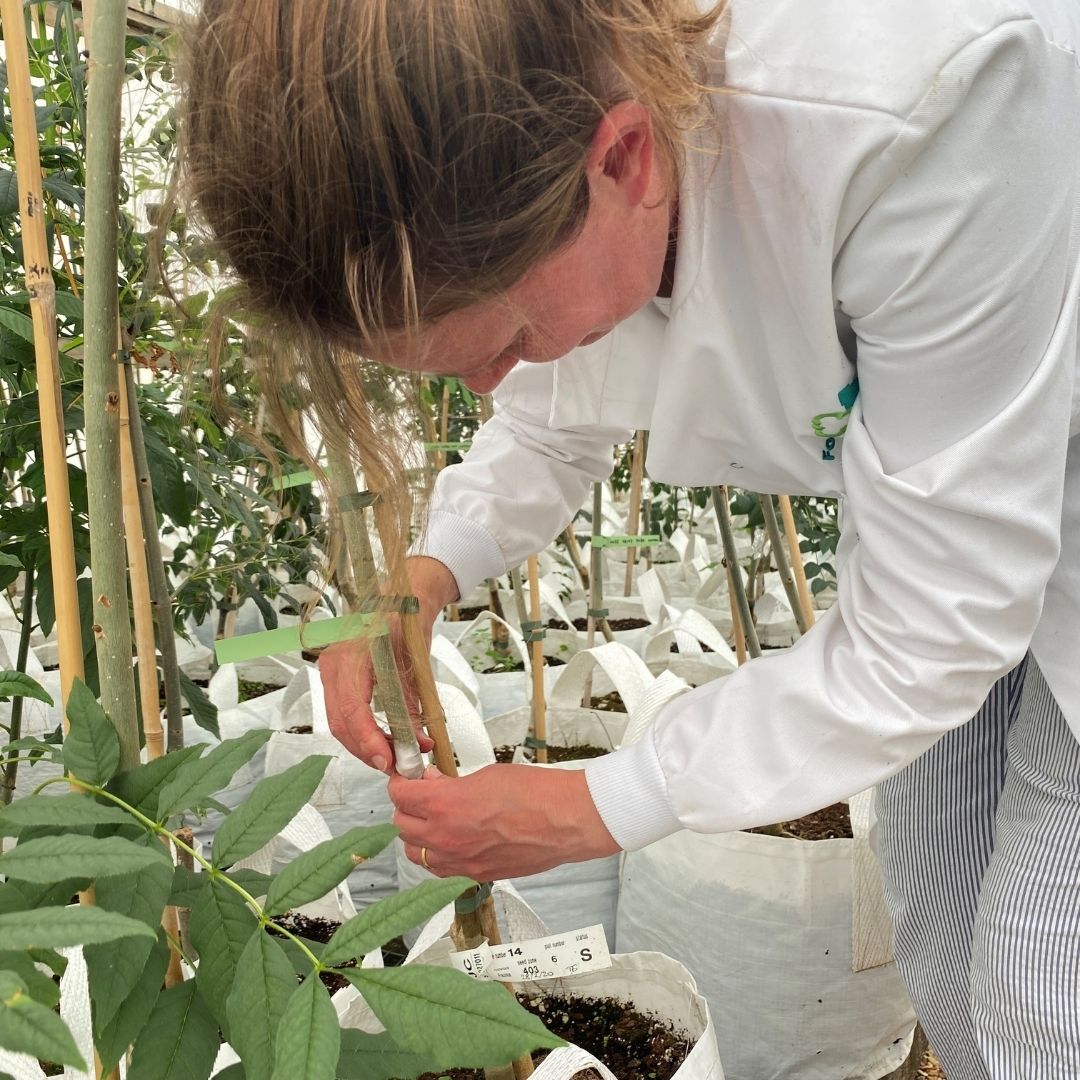The Living Ash Project
The Living Ash Project is identifying trees with a high degree of tolerance, collecting graftwood from them, and planting them out in a national archive on the public forest estate for further research.
The Future Trees Trust and Forest Research are working with Royal Botanic Gardens, Kew to screen trees and investigate techniques to successfully take cuttings of ash. The aim is to try and avoid the need for grafting. The team is also working with Fera to investigate the chemical component of the trees and identify the molecules associated with tolerance.
There are millions of ash trees in our countryside and we really need your help. If you know of any ash trees, within a woodland setting, that look healthy but are surrounded by ash that are badly infected with ash dieback then we want to hear from you.
You can report these ‘healthy’ trees by going on the Report a Tree tab.
The first phase of the Living Ash Project (2013-2018)
This phase involved the screening and selection of common ash (Fraxinus excelsior) for resistance to Chalara fraxinea (as ash dieback was originally called). It was funded by Defra and delivered by a group of organisations with extensive experience of selecting and breeding ash for its timber traits. It also used citizen science to look for trees in the wider environment. In total, 412 trees were selected from areas of high infection.
At the same time, Forest Research was screening 155,000 trees that were in production at the onset of ash dieback. They too selected those trees showing the most tolerance resulting in 557 trees being grafted and planted along with the selected trees from the Living Ash Project to form the National Archive of Tolerant Ash.
We are now in the second phase of the Living Ash project,
The Project is funded by Defra with the aim to secure tolerant material for seed production purposes.
We will be testing our selections using chemical fingerprinting and controlled inoculations to quantify tolerance and will be developing new propagation techniques and adding more tolerant trees to the archive. The tolerant seed we produce will be used to replant lost ash trees in our native woodlands.
The Living Ash Project runs until August 2024 and we encourage you to get involved and report tolerant trees to us.

Managing Research Trials
Forest Research
Fourteen provenance trials were planted by Forest Research in 2012 to screen ash trees for tolerance to ash dieback. Seven of these have now closed, and tolerant trees have been grafted and are in the National Archive. Forest Research continue to monitor the other sites and the most tolerant selections will be added to the archive. In additional to these mass screening trials, Forest Research planted three progeny trials in 2014 from known parents to investigate heritability of tolerance. These trials are ongoing.
The National Archive of Tolerant Material
Future Trees Trust
Between the Living Ash Project and the mass screening trials, almost 1000 trees displaying a high level of tolerance to ash dieback were selected and grafted in January 2018. These were planted out on the public forest estate in December 2019 in the National Archive of Tolerant Ash and we continue to monitor these. Some are not robust selections, and these will be removed over time, with trees with greater tolerance added. As the disease progresses in Britain, trees with greater tolerance will become more obvious as ash trees decline and die. We want you to tell us about these trees in any woodland you manage.
Testing the selections through LC-MS
Fera
Liquid chromatography mass spectrometry (LC-MS) has been shown to be a useful tool to quantify tolerance within trees through chemical screening. It indicates changes in compounds, tentatively identified as iridoid glycosides, which are involved in herbivory defence. A test panel is created using trees of know phenotype (we select 50 trees with high tolerance and 50 trees with very low tolerance). We will then use the test panel to corroborate the tolerance selections made for the National Archive.

Testing the selections through controlled inoculation
Forest Research
Another method to test the tolerance of the selections made is through controlled inoculations. Two methods will be tested: 1) Ascospores will be harvested from fruiting bodies and inoculated on to ash leaves and 2) small cubes of sterile ash wood will be inoculated with the fungus and taped to the main stem of the ash tree following the creation of a small wound. The infected trees will be monitored for several months and any resulting infections recorded.
Developing vegetative propagation techniques
Kew
The trees in the National Archive are grafted on to rootstocks of common ash. This is because grafting yields very high success rates (over 95%). However, there is no guarantee that the rootstock is of tolerant material, and research has shown that ash can be infected through pores in the stem/ bark called lenticles, particularly when inoculum levels are high. It is preferable to have tolerant selections on their own roots to eliminate this step. Work in the original project looked at tissue culture, but costs are expensive and while getting plantlets from seed was straight forward, less success was obtained with shoot material. Here we will investigate vegetative propagation techniques for ash, to yield consistently high results which currently is hard to achieve without grafting.

